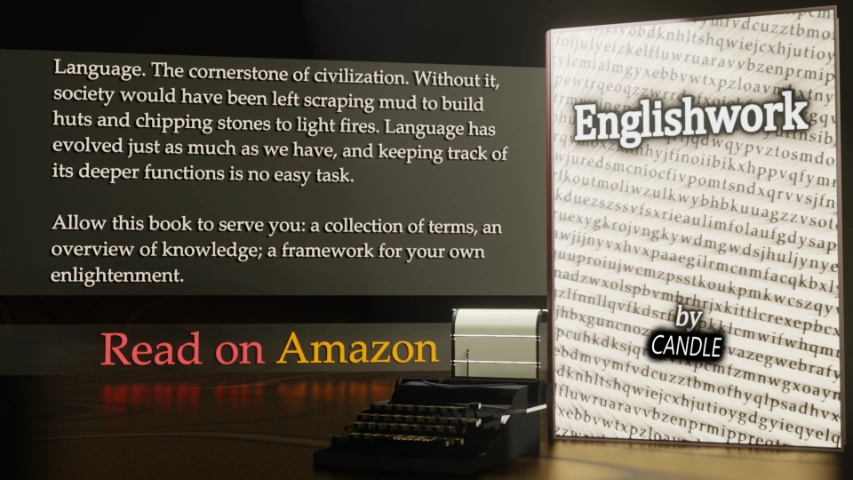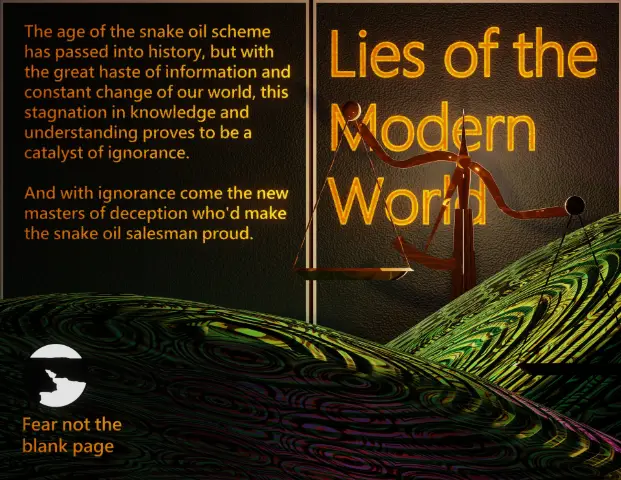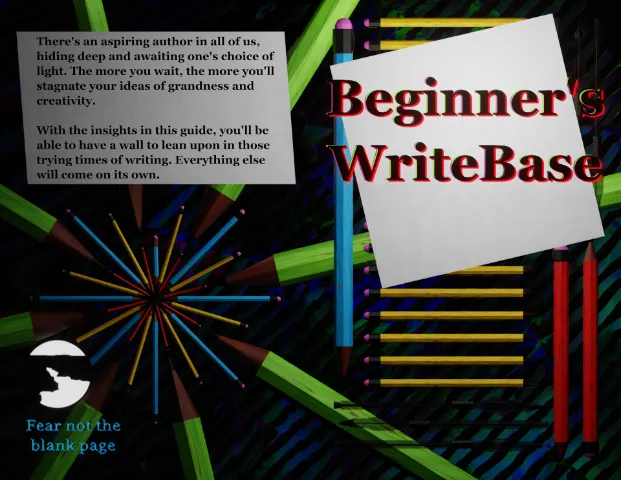Chapter 2
— Lexis and Semantics —
Now that the basic terms are understood, it’s time to examine the context by which these words can acquire meaning. Meaning isn’t set in stone, as there are always factors which can change its interpretation.
Lexis: the total stock of words in a language; the breath of the language.
Semantics: the meaning of ‘lexical items’ in context with the rest of the text or speech.
To measure the factors which change the contextual meaning of language, some further terms need to be understood. Just as words can be classified into a number of word classes, using their function in language to determine in which class they belong, so can they all be broken down in a different way, into two overall functions: grammatical and semantic.
The ‘connotations’ (implied meaning) and ‘denotations’ (intended meaning) of both lexis and semantics change with social variation: the different social groups people identify with, such as regional affiliation, age, occupation and ethnic identity; historical variation, such as the outlawing of slavery, and various other factors.
Words can either serve a grammatical function, meaning they give the text its structure, or can serve a semantic function and therefore carry the context and meaning. Words such as ‘of’, ‘to’, ‘that’, they bring no direct meaning but are required to allow sense to be made of the semantic parts, those being the nouns, verbs and so on we’ve covered before.
2.2 – Textual Analysis and Context.
Breaking down the context of the text helps understand its deeper meaning. This process of breaking down the context can be achieved with the following methods:
| Term | Meaning | |
| GAP | Genre, Audience, Purpose | The genre is the type of text or speech itself, such as a legal document or a note left on a fridge. The audience stands for the demographics of the reader (age, identity, personality, etc), while the purpose is what the text was made for, be it for entertainment or information. |
| COP | Context of Production | The language, medium and distribution of the text, when it was made, who made it (actual writer), who are people supposed to think had made it (the intended writer) and who the text implies to have made it (implied writer). |
| COR | Context of Reception | When it was received, how it was received, the demographics of the readers. These can be the ‘intended’ readers who the document was written for; the ‘actual’ readers who read it, or the ‘implied’ readers which the text creates. |
| SHEP | Social, Historical, Economic and Political factors | |
| FMM | Field Mode Manner | Field-Specific Lexis of the text is jargon and specialized vocabulary, such as a medical journal might have. Mode is howthe text is delivered, such as spoken or written, multimodal (brail or morse code) and graphology (the visuals like font, color and composition). Manner isthe formality of the text, more information below. |
The difference between the COP and COR elements are as important to be compared with one another as they are to be considered on their own. The difference between the two becomes more pronounced as time goes on. This can be easily observed by looking at classic comedy TV shows, which often make jokes about topics that society finds unacceptable to be made today.
The terms implied, intended and actuarial reader and writer of the text are not obvious, but are simple to explain.
Take the example of a cheerfully written and overall friendly letter from the government addressed to the occupancy of a housing state, informing them the local nature park will be replaced by parking spaces.
The implied writer is a caring and considerate member of society who cares about the people who live there and wants to inform them of this good news. However, the actuarial writer is likely to be just a secretary who doesn’t have even the smallest say in what happens, following the instructions of a governing body of officials who have no care for the people who live there.
On the other side, we have the implied audience of this text (the person the text was supposedly written for): a cheerful, complacent, average member of society who trusts the local government and doesn’t know much about how it’s run, hence, the lack of specific details, the admittance of the real reason for the construction and the unnecessarily friendly tone.
The actuarial audience depends on the individual, but they may well be less complacent in this matter than the writer of the text would hope.
2.3 – Martin Joos and the Levels of Formality.
Created by Martin Joos, these 5 levels are loose definitions of how formal a text is. It is just a spectrum, rather than a definite level, but it gives a rough idea of how to describe its formality. A text or speech’s formality links closely to its meaning.
| Frozen | Written Language of a highly impersonal and formal nature. A book of laws is likely to be in Frozen formality. |
| Deliberative | Carefully planned language, oft with reading vocabulary words. A legal letter from a lawyer might be deliberative. It falls short from frozen because it is more personal, being addressed from one person to another. |
| Consultative | The language of general business and polite conversation with acquaintances, the language you ‘consult’ with. |
| Casual | More relaxed conversation for relaxed surroundings with a friendly atmosphere. |
| Intimate | The Language of family, close friends and lovers – the least formal form of language. |
Informal language also consists of colloquialisms, which are established informal words and phrases, and slang, which tends to be more original and niche in examples like “wicked” for “excellent“. This type of language can also become vulgar or taboo, which includes swearing and expletives. More formal language can be distant and cold; informal is seen as unprofessional.
The act of moving between these levels of formality is code-switching. A simple example of code-switching might be an expletive curse in an otherwise formal document.
However, as a reminder that context always matters, if the swear word is a quote from somebody else, which this otherwise formal text is commenting on, it isn’t code-switching because it’s just reporting on what was said.
Elevated, educated, Latinate (from Latin) or polysyllabic (many syllabled) words are more formal than colloquial, demonic, vernacular, Anglo-Saxon, simple, monosyllabic or slang and taboo words.
2.4 – Idioms.
These are everyday sayings – usually metaphors – which cannot be easily translated into a foreign language and can be difficult to learn for outsiders. The connection between an idiom and its source has often been lost, but analysing groups of similar idioms can sometimes reveal an overall trend. “To get hold of the short end of the stick” and “it takes two to tango” are prime examples of idioms.
2.5 – Connotation, Denotation, Pun and Metaphors.
Every word will have multiple different meanings that can be implied (given) by the creator and inferred (taken) by the receiver. The standard dictionary definition of a word is its denotation, and it generally has a fixed meaning. The connotations of a word are the associations which can be created with the word on individual, personal or emotional connection.
For example, the denotations of the word ‘fox‘ is of a carnivorous and generally nocturnal mammal belonging to the Canidae family. Denotations depend on unbiased facts. Bear in mind even unbiased facts have the potential to change over time, as society’s understanding of a matter grows.
The connotations of a fox, however, is of a cunning and cruel hunter, cold and remorseless, wryly and fiendishly intelligent. Others see them as nothing more than stinking, troublesome vermin. Connotations depend on personal or social opinion, and such can change over time.
Most words have more than one meaning connected with them. These polysemies (words which are polysemic) can create ambiguity in a text (either mistakenly or in order to create a comic device or pun).
Literal and figurative word meanings can also create: personification (the giving of inanimate objects or animals humanesque qualities); metaphor, where one thing is described as being another, and similes which are like a metaphor but use ‘like’ or ‘as’, rather than ‘be’ or ‘become’.
2.6 – Relationships Between Meanings.
These are ways in which the difference between two words can be described, or to make a comparison with something else.
Synonym: Words with a similar meaning – happy, cheerful, elated, content.
Antonym: Words with opposite meanings – happy, sad; tall, short; strong, weak.
Oxymoron: A figure of speech with two contradictory terms together – happy sadness.
Hyperbole: An exaggeration of something.
Litotes: An ironical understatement.
Euphemism: A mild or indirect substitute for an unpleasant or embarrassing word.
2.7 – Neologisms.
When a new word is created, it is called a neologism.
| Loans | When a word is taken from another language. The English language is full of loan words from various languages. |
| Composites | Two words combined together, either through affliction, such as transport (trans- port) or by compound, like in farmhouse (farm house). |
| Shortenings | An abbreviation or clipping of a word. A clipping is where part of the word is cut out, such as vet (veterinarian). An abbreviation is a shortening of a word or words into letters. This can be either an initialism where each letter is spoken individually, like CNN, or can be an acronym, which is said as a single word, such as SPAM. |
| Blends | When the word is shortened (usually through clipping) and also composited together. Examples are spork (spoon fork) and cyborg (cybernetic organism). |
| Shifts | When a word changes in meaning over time, sometimes drastically. Gay stopped meaning carefree and became homosexual. The brand name Google stopped being a brand name and became a verb (to google). |
| Creations | True, original inventions. These are fairly rare as they have to be intentionally created and don’t often occur naturally. |
This links into the study of entomology, the study of the history of a word, its development, spread and origin. For instance, force is from the Latin word fortus (strong), which shares the same root word as fortress.



